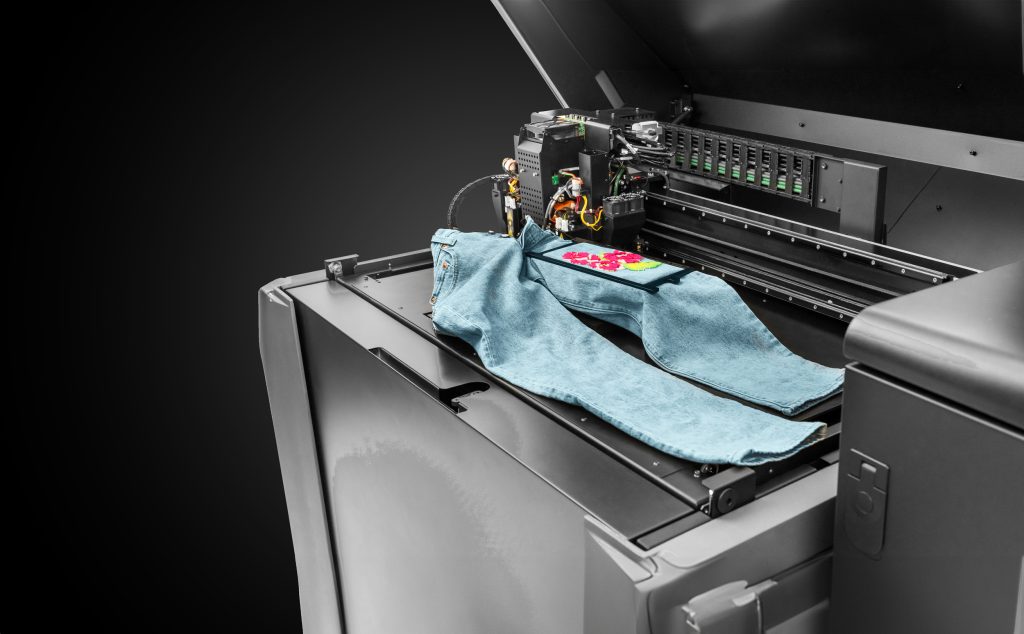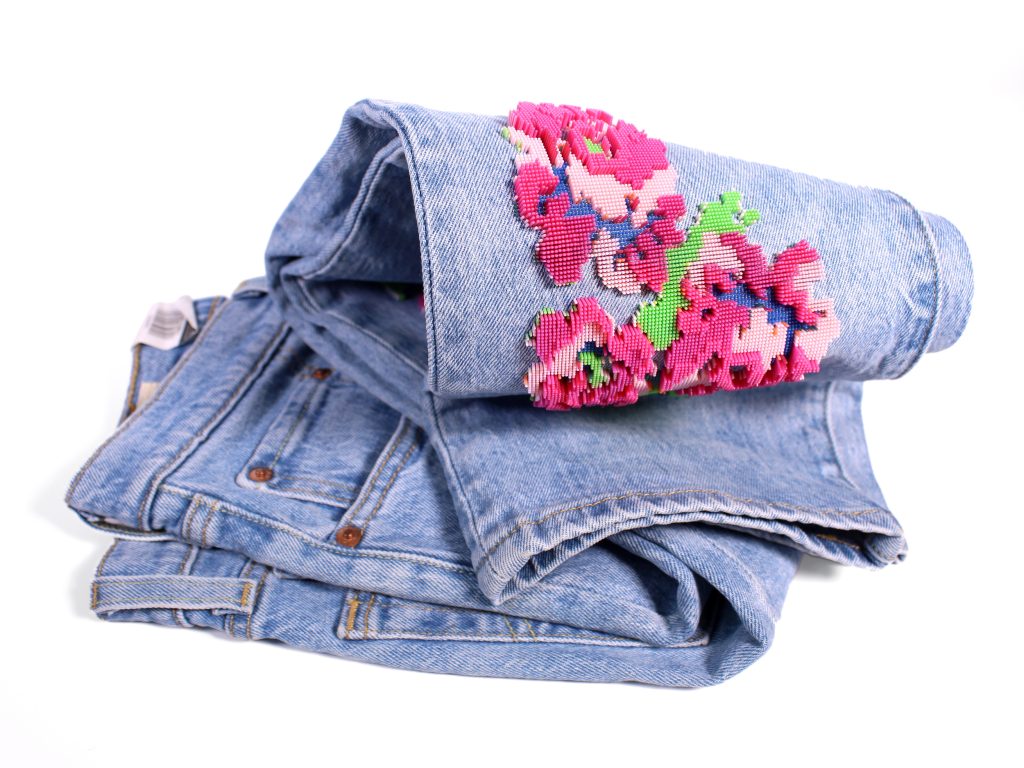3D printer manufacturer Stratasys has announced the launch of the new Direct-to-Garment (D2G) feature for its J850 TechStyle fashion 3D printer.
This new offering adds to the company’s range of 3DFashion direct-to-textile technology, and allows clothing manufacturers to 3D print multi-material designs directly onto existing garments such as jeans and jackets.
Compatible with denim, cotton, polyester, and linen fabrics, D2G allows fashion brands to personalize individual clothing products to meet customer preferences and styles. According to Stratasys, this new offering allows designers to minimize material waste by converting existing clothing items into new, bespoke fashion products.
“Many brands are limited in how much they can mass produce denim clothing while maintaining a level of personalization that has meaning to the wearer,” explained Stratasys’ Senior Vice President Commercial Solutions, Zehavit Reisin.
“We are giving brands the opportunity to do something remarkable, to bring more character to their clothing line, while pushing a more sustainable business practice that appeals to multiple audiences across the consumer spectrum.”
The company has partnered with leading designers Karim Rashid, Travis Fitch, and Zlatko Yanakiev to showcase D2G technology through the Urban Tattoo denim collection.
This showcase seeks to highlight how Stratasys 3D printing can be used to upcycle and revitalize old denim garments for a more sustainable fashion supply chain. The Urban Tattoo collection will be unveiled on April 23 at the Texprocess exhibition in Frankfurt, Germany.

3D printing sustainable fashion
Launched in 2022, Stratasys’ J850 TechStyle is optimized for the customization of high-end clothing, bags, accessories, and footwear. Boasting a build volume of 460 x 360 x 50mm (on fabrics up to 2m²), the fashion 3D printer can be used with a comprehensive range of Stratasys resins.
These materials include the company’s Agilus30 for full-color flexible designs and Vero resin. The latter enables the production of transparent designs that feature a soft, silk-like feel. Additionally, Stratasys VeroVivid resin can be used to achieve over 600,000 unique color gradients and a range of hardness levels.
Stratasys’ newest addition to its 3DFashion portfolio comes in the form of D2G tray kits, which are available in two sizes. This technology allows users to calibrate their J850 3D printer to meet a range of garment sizes, and 3D print full-color designs directly onto existing items of clothing.
D2G seeks to increase the sustainability of the fashion industry, allowing clothing manufacturers to save material by upcycling old garments with unique 3D printed designs.
This aligns with Stratasys’ goal of achieving Mindful Manufacturing by promoting more sustainable and environmentally friendly practices. The company points to a recent study by the Additive Manufacturer Green Trade Association (AMGTA) as highlighting the environmental benefits of its fashion 3D printing technology.
According to the report, the Stratasys J850 TechStyle enabled a 24.8% reduction in CO2e emissions and a 48% reduction in stock material when producing a 3D logo for luxury footwear. What’s more, additive manufacturing requires 64% less electricity than the conventional injection molding and thermal bonding manufacturing process.

The fashion industry adopts 3D printing
The fashion sector is witnessing increasing adoption of 3D printing, with luxury designers recognizing its benefits for the production of bespoke fashion accessories.
Earlier this year, Israeli 3D printer manufacturer XJet collaborated with high-end fashion firm XOLUTIONS to address rising demand for stainless steel fashion accessories with 3D printing.
This partnership has seen XOLUTIONS acquire an XJet Carmel 1400M metal 3D printer. The system is being used to expand research and development into the use of metal 3D printing in the luxury sector, including for the production of jewelry. Employing XJet’s NanoParticle Jetting technology, the Carmel 1400M provides the high resolution and surface smoothness that is essential for high-end fashion products.
Elsewhere, 3D printing company Chromatic 3D Materials and Dutch fashion designer Anouk Wipprecht partnered to create a 3D printed dress featuring responsive LED lights. The garment, which was displayed at Formnext 2023, represented an early example of electronics being integrated directly into 3D printed elastomers.
The dress was 3D printed from Chromatic’s ChromaFlow 70 heat resistance material, which can stretch more than four times its length without breaking. This flexibility makes it well suited to the fashion industry, and the production of garments ranging from swimwear to leisure apparel.
Want to help select the winners of the 2024 3D Printing Industry Awards? Join the Expert Committee today.
What does the future of 3D printing hold?
What near-term 3D printing trends have been highlighted by industry experts?
Subscribe to the 3D Printing Industry newsletter to keep up to date with the latest 3D printing news.
You can also follow us on Twitter, like our Facebook page, and subscribe to the 3D Printing Industry Youtube channel to access more exclusive content.
Featured image shows Stratasys’ Direct-to-Garment (D2G) 3D printing process. Image via Stratasys.

